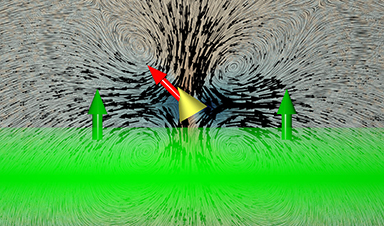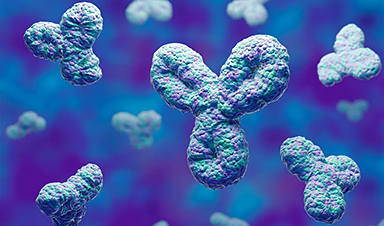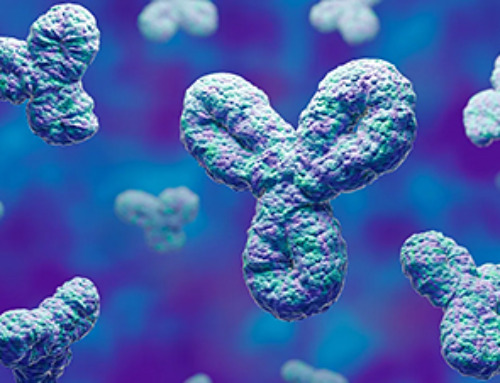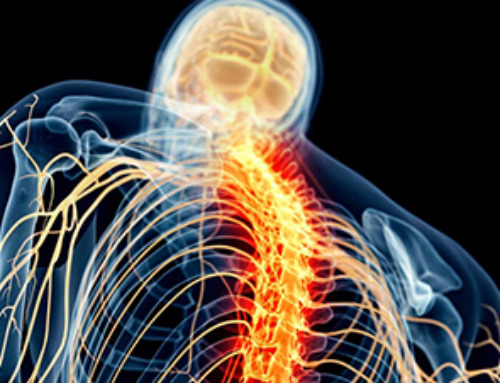Microscopically tiny nanomachines which move like submarines with their own propulsion—for example in the human body, where they transport active agents and release them at a target: What sounds like science fiction has, over the past 20 years, become an ever more rapidly growing field of research. However, most of the particles developed so far only function in the laboratory. Propulsion, for example, is a hurdle. Some particles have to be supplied with energy in the form of light, others use chemical propulsions which release toxic substances. Neither of these can be considered for any application in the body. A solution to the problem could be acoustically propelled particles. Johannes Voß and Prof. Raphael Wittkowski from the Institute of Theoretical Physics and the Center for Soft Nanoscience at the University of Münster (Germany) have now found answers to central questions which had previously stood in the way of applying acoustic propulsion. The results have been published in the journal ACS Nano.
Ultrasound is used in acoustically propelled nanomachines as it is quite safe for applications in the body. Lead author Johannes Voß sums up the research carried out so far as follows: “There are many publications describing experiments. However, the particles in these experiments were almost always exposed to a standing ultrasound wave. This does admittedly make the experiments considerably simpler, but at the same time it makes the results less meaningful as regards possible applications—because in that case traveling ultrasound waves would be used.” This is due to the fact that standing waves are produced when waves traveling in opposite directions overlap one another.
What researchers also did not previously take into account is that in applications the particles can move in any direction. Thus, they left aside the question of whether propulsion depends on the orientation of the particles. Instead, they only looked at particles aligned perpendicular to the ultrasound wave. Now, for the first time, the team of researchers in Münster studied the effects of orientation using elaborate computer simulations.
They came to the conclusion that the propulsion of the nanoparticles depends on their orientation. At the same time, the acoustic propulsion mechanism in traveling ultrasound waves functions so well for all orientations of the particles—i.e. not only exactly perpendicular to the ultrasound wave—that these particles really can be used for biomedical applications. Another aspect the Münster physicists examined was the propulsion the particles exhibited when they were exposed to ultrasound coming from all directions (i.e. “isotropic ultrasound”).
A basis for the step towards application
“Our results showed how the particles will behave in applications and that the propulsion has the right properties for the particles to actually be used in these applications,” Johannes Voß concludes. As Raphael Wittkowski adds, “We have revealed important properties of acoustically propelled nanoparticles which had not previously been studied, but which need to be understood to enable the step to be made from basic research to the planned applications involving the particles.”
The two Münster researchers examined conical particles, as they can move fast even at a low intensity of ultrasound—i.e. they have efficient propulsion—and also they can easily be produced in large numbers. The particles are almost one micrometer in size—almost a thousand nanometres. In comparison, a red blood cell has a diameter of around 7.7 micrometers. This means that the nanoparticles could move through the bloodstream without blocking up the finest blood vessels. “The particle size can be selected in line with what is needed in the particular application intended, and the propulsion mechanism also functions in the case of smaller and larger particles,” Johannes Voß explains. “We simulated the particles in water, but the propulsion is also suitable for other fluids and for tissue.”
By means of computer simulations, the team investigated systems and their properties which could not be studied in the many preceding experiments. Looking into the future, Raphael Wittkowski says, “An important step would be for experiment-based research to move on to looking at these systems.”
News
Specially engineered antibody delivers RNA therapy to treatment-resistant tumors
Elias Quijano, PhD; Diana Martinez-Saucedo, PhD; Zaira Ianniello, PhD; and Natasha Pinto-Medici, PhD, there are 25 other contributors, most from Yale's Department of Therapeutic Radiology and from the departments of genetics, molecular biophysics and [...]
Vaccinated women face fewer cervical cancer risks
New data from Denmark shows the HPV vaccine’s powerful long-term impact, while also revealing why cervical cancer screening is still essential. A Danish study published in the journal Eurosurveillance reports that women who received the human [...]
3D-printed implant offers a potential new route to repair spinal cord injuries
A research team at RCSI University of Medicine and Health Sciences has developed a 3-D printed implant to deliver electrical stimulation to injured areas of the spinal cord, offering a potential new route to [...]
Nanocrystals Carrying Radioisotopes Offer New Hope for Cancer Treatment
The Science Scientists have developed tiny nanocrystal particles made up of isotopes of the elements lanthanum, vanadium, and oxygen for use in treating cancer. These crystals are smaller than many microbes and can carry isotopes of [...]
New Once-a-Week Shot Promises Life-Changing Relief for Parkinson’s Patients
A once-a-week shot from Australian scientists could spare people with Parkinson’s the grind of taking pills several times a day. The tiny, biodegradable gel sits under the skin and releases steady doses of two [...]
Weekly injectable drug offers hope for Parkinson’s patients
A new weekly injectable drug could transform the lives of more than eight million people living with Parkinson's disease, potentially replacing the need for multiple daily tablets. Scientists from the University of South Australia [...]
Most Plastic in the Ocean Is Invisible—And Deadly
Nanoplastics—particles smaller than a human hair—can pass through cell walls and enter the food web. New research suggest 27 million metric tons of nanoplastics are spread across just the top layer of the North [...]
Repurposed drugs could calm the immune system’s response to nanomedicine
An international study led by researchers at the University of Colorado Anschutz Medical Campus has identified a promising strategy to enhance the safety of nanomedicines, advanced therapies often used in cancer and vaccine treatments, [...]
Nano-Enhanced Hydrogel Strategies for Cartilage Repair
A recent article in Engineering describes the development of a protein-based nanocomposite hydrogel designed to deliver two therapeutic agents—dexamethasone (Dex) and kartogenin (KGN)—to support cartilage repair. The hydrogel is engineered to modulate immune responses and promote [...]
New Cancer Drug Blocks Tumors Without Debilitating Side Effects
A new drug targets RAS-PI3Kα pathways without harmful side effects. It was developed using high-performance computing and AI. A new cancer drug candidate, developed through a collaboration between Lawrence Livermore National Laboratory (LLNL), BridgeBio Oncology [...]
Scientists Are Pretty Close to Replicating the First Thing That Ever Lived
For 400 million years, a leading hypothesis claims, Earth was an “RNA World,” meaning that life must’ve first replicated from RNA before the arrival of proteins and DNA. Unfortunately, scientists have failed to find [...]
Why ‘Peniaphobia’ Is Exploding Among Young People (And Why We Should Be Concerned)
An insidious illness is taking hold among a growing proportion of young people. Little known to the general public, peniaphobia—the fear of becoming poor—is gaining ground among teens and young adults. Discover the causes [...]
Team finds flawed data in recent study relevant to coronavirus antiviral development
The COVID pandemic illustrated how urgently we need antiviral medications capable of treating coronavirus infections. To aid this effort, researchers quickly homed in on part of SARS-CoV-2's molecular structure known as the NiRAN domain—an [...]
Drug-Coated Neural Implants Reduce Immune Rejection
Summary: A new study shows that coating neural prosthetic implants with the anti-inflammatory drug dexamethasone helps reduce the body’s immune response and scar tissue formation. This strategy enhances the long-term performance and stability of electrodes [...]
Scientists discover cancer-fighting bacteria that ‘soak up’ forever chemicals in the body
A family of healthy bacteria may help 'soak up' toxic forever chemicals in the body, warding off their cancerous effects. Forever chemicals, also known as PFAS (per- and polyfluoroalkyl substances), are toxic chemicals that [...]
Johns Hopkins Researchers Uncover a New Way To Kill Cancer Cells
A new study reveals that blocking ribosomal RNA production rewires cancer cell behavior and could help treat genetically unstable tumors. Researchers at the Johns Hopkins Kimmel Cancer Center and the Department of Radiation Oncology and Molecular [...]





















